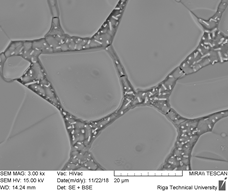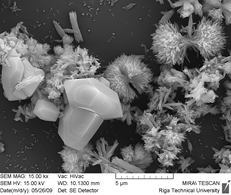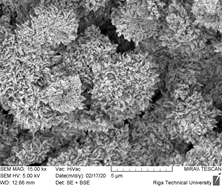
Variable Pressure High Resolution Schottky Field Emission Scanning Electron Microscope





A variable pressure FE SEM that supplements all the advantages of the high vacuum model with extended facilities for low vacuum operations, allowing investigation of nonconductive specimens in their natural uncoated state. The electrons interact with atoms in the sample, producing various signals (secondary electrons, backscattered electrons, X-rays), that can be detected and that contain information about the sample's surface topography and composition.
SPECIFICATION
The sample must be fixed, dehydrated, coated (if nonconductive) before it can be observed in SEM.
MIRA\LMU: Resolution
- In high vacuum mode (SE) 2.0 nm at 30 kV; 3.0 nm at 3 kV
- In low vacuum mode (SE) 2.5 nm at 30 kV (LVSTD); 3.5 nm at 3 kV (LVSTD)
Working vacuum
- Chamber – High vacuum mode < 1 x 10 -3 Pa
- Chamber – Low vacuum mode 7–150 Pa
- Gun vacuum 4 x 10-8 Pa
Detectors
- SE detector (to observe the topography of the conductive specimen surface)
- Retractable BSE detector (to detect contrast between areas with different chemical compositions of the specimen surface)
- LVSTD detector (to observe the topography of the nonconductive specimen surface)
- TE detector (to observe the internal structure of the specimen)
- EDS detector (to detect chemical composition of the sample)
Chamber:
- Internal diameter: 230 mm
- Door width: 148 mm
- Number of ports: 11
- Chamber suspension: Pneumatic (N2); active vibration isolation
Specimen stage:
- Type: compucentric
Movements
- Fully motorized: X = 80 mm, Y = 60 mm, Z = 47 mm
- Rotation: 360˚ continuous
- Tilt: -75˚ to +-50˚
- Specimen height: maximum 60 mm
Publications
If interested, please fill out the form below
BBCE project´s main objective is to establish a joint Baltic Biomaterials Centre of Excellence for advanced biomaterials development based on the long-term strategic cooperation between AO Research Institute Davos, Switzerland (ARI) and Friedrich-Alexander University of Erlangen-Nuremberg, Germany (FAU) on the one hand and RTU RBIDC, LIOS, RSU and RSU IS on the other hand.

